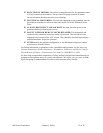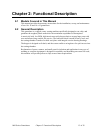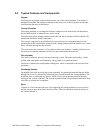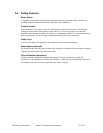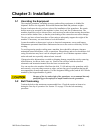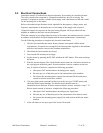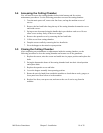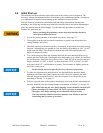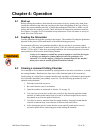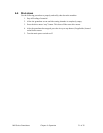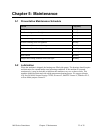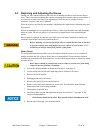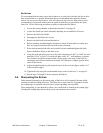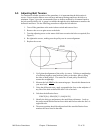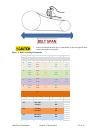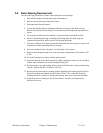
1400 Series Granulators Chapter 4: Operation 20 of 43
Chapter 4: Operation
4-1 Start-up
Before starting the machine, check that the rotor rotates freely by rotating it by hand from
outside the machine using either the coupling or the sheave depending on the type of drive.
Inspect the cutting chamber carefully to insure that nothing has fallen into it. Make sure all
screws and bolts are properly secured. Check all electrical connections and motor rotations.
See Chapter 3 on pages 16-19 for detailed set-up instructions. Allow all motors to run up to
speed for at least 30 seconds.
4-2 Feeding the Granulator
Feed the granulator through the opening in the hopper. The method of feeding the granulator
depends on the physical form and nature of the material being processed.
For maximum efficiency, the granulator should be fed at a rate that is consistent with its
capacity; i.e., if the granulator is rated at 60 kg/hr (132 lbs./hr.), then the general feed rate is 1
kb/min. (2.2 lbs./min.). Under these operating conditions, the correct proportions of cut and
uncut particles will be present in the cutting chamber.
Under no circumstances should the operator attempt to reach into the hopper
to dislodge any bridged or jammed material while the granulator is in
operation. To clear the hopper of bridged or jammed material, the machine
main power must be turned off and the machine isolated.
4-3 Clearing a Jammed Cutting Chamber
Never attempt to free a jammed machine by placing hands on the rotor, rotor knives, or inside
the cutting chamber. Hands must be kept clear of the rotational path of the rotor knives.
Good footing on a clean floor is essential and the body should be well braced to guard against
loss of balance should the jam suddenly come free. Use the following procedure to clear a
jammed cutting chamber:
1. Disconnect and lock out power.
2. Be certain that the rotor is motionless.
3. Open the machine as instructed in Section 3-4 on page 18.
4. Use a pry bar to exert force on the rotor, usually in the direction opposite normal
rotation. A leather mallet and a block of wood of sufficient length can be used to
keep hands away from the path of the knives.
5. Use pliers to remove material from the cutting chamber, keeping in mind that the
removal of material may cause rotation of the rotor and rotor knives.
6. After clearing the jam, be certain that the screen and all guards and covers are
secured in place before connecting power and starting the machine.



